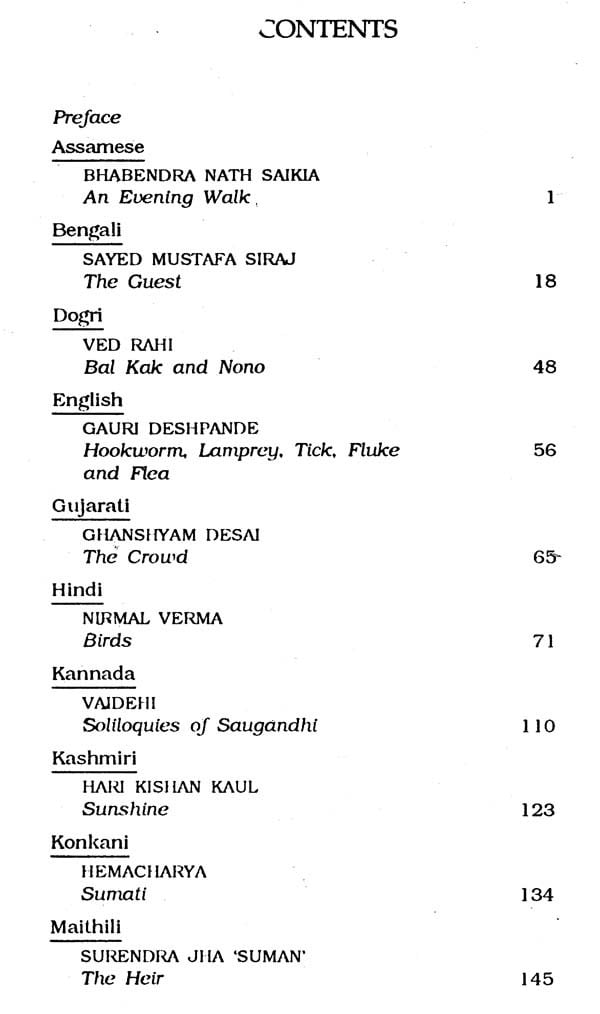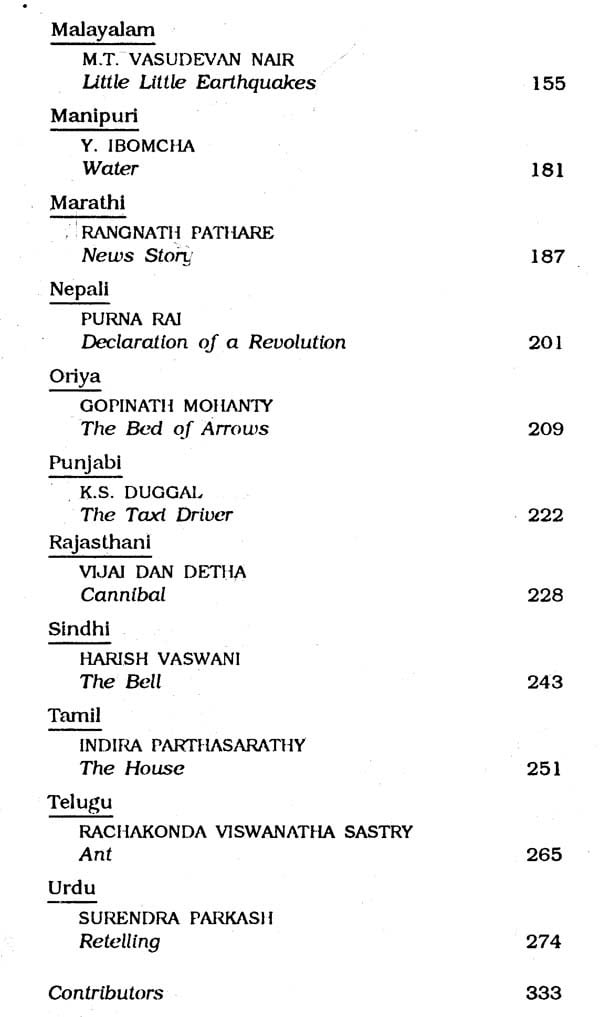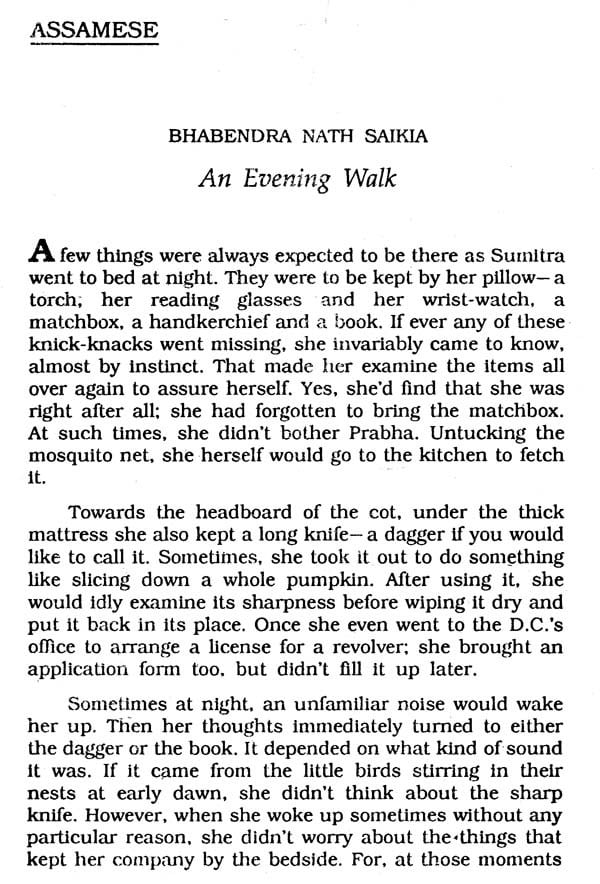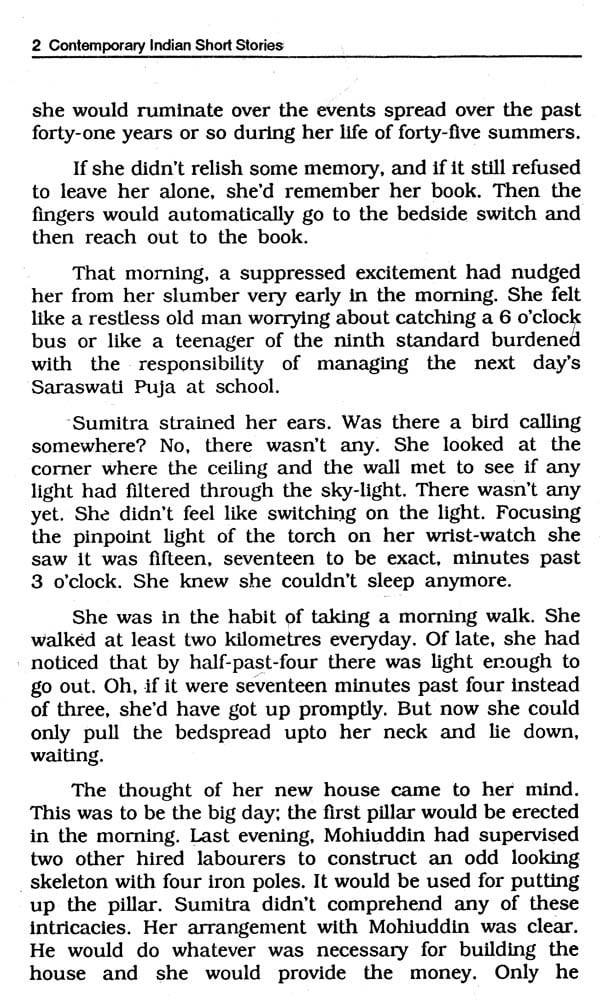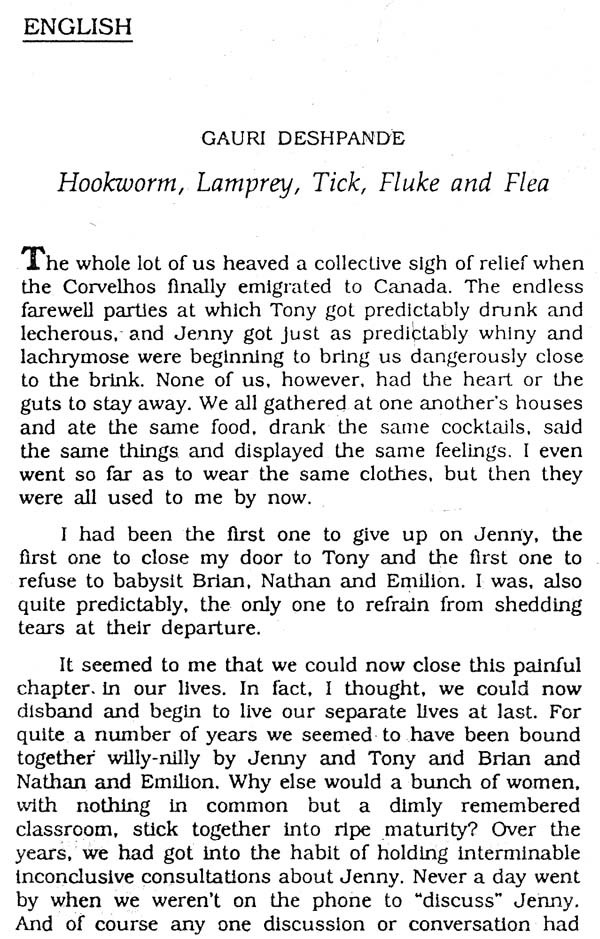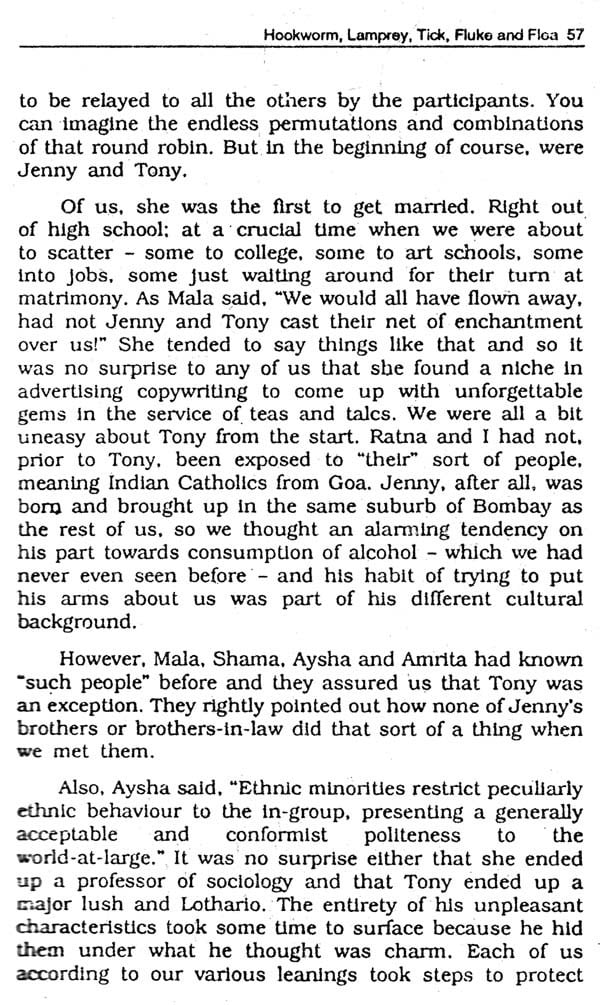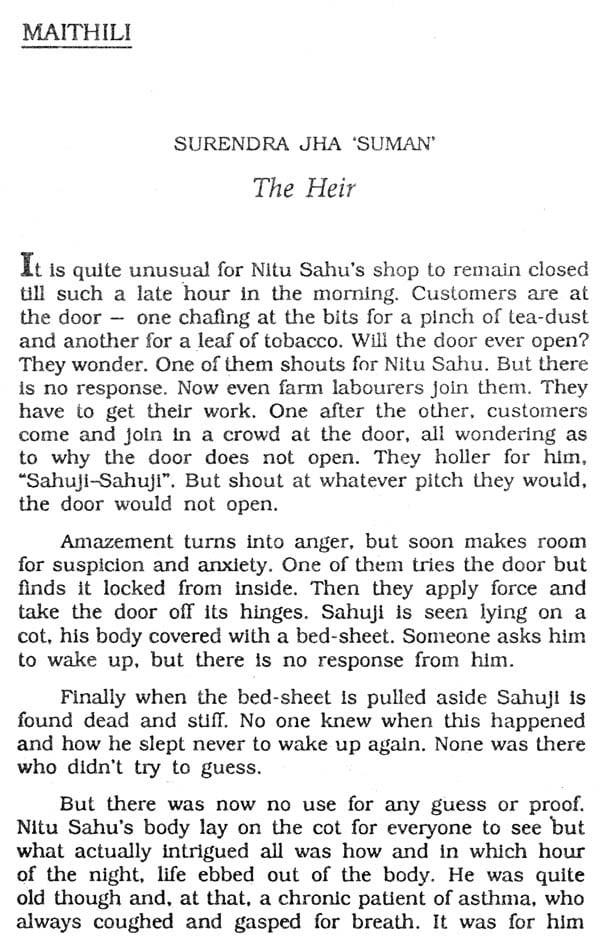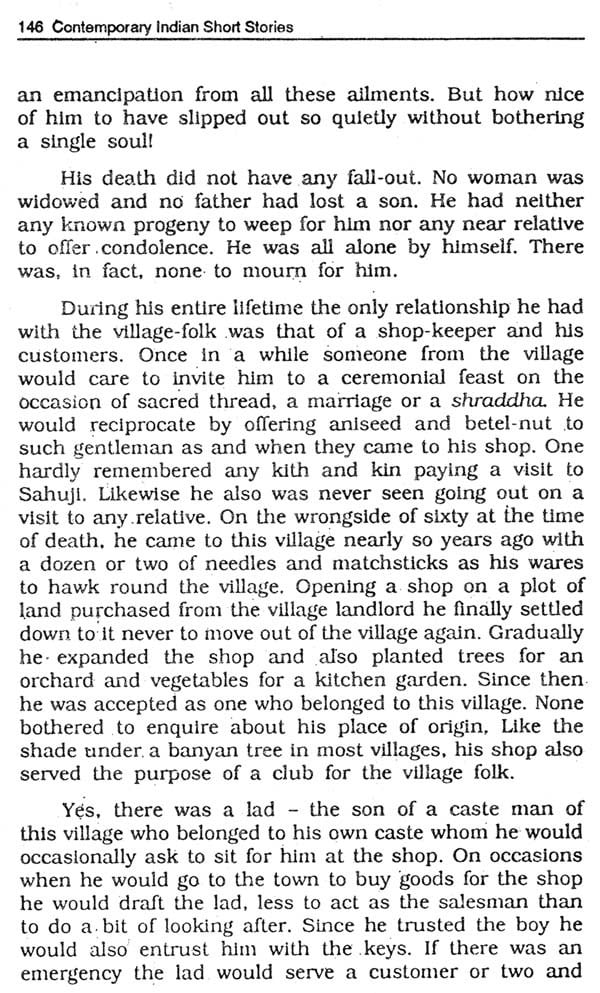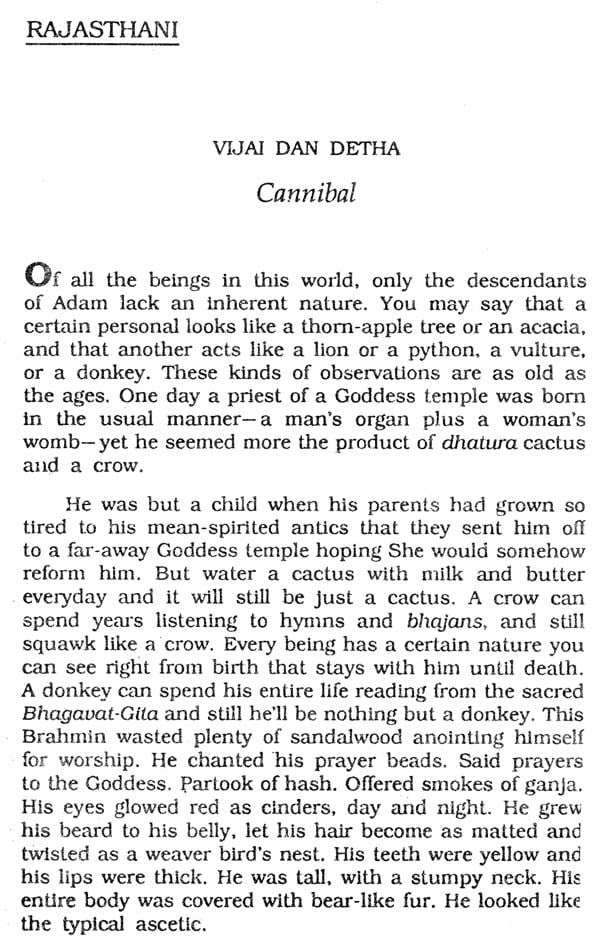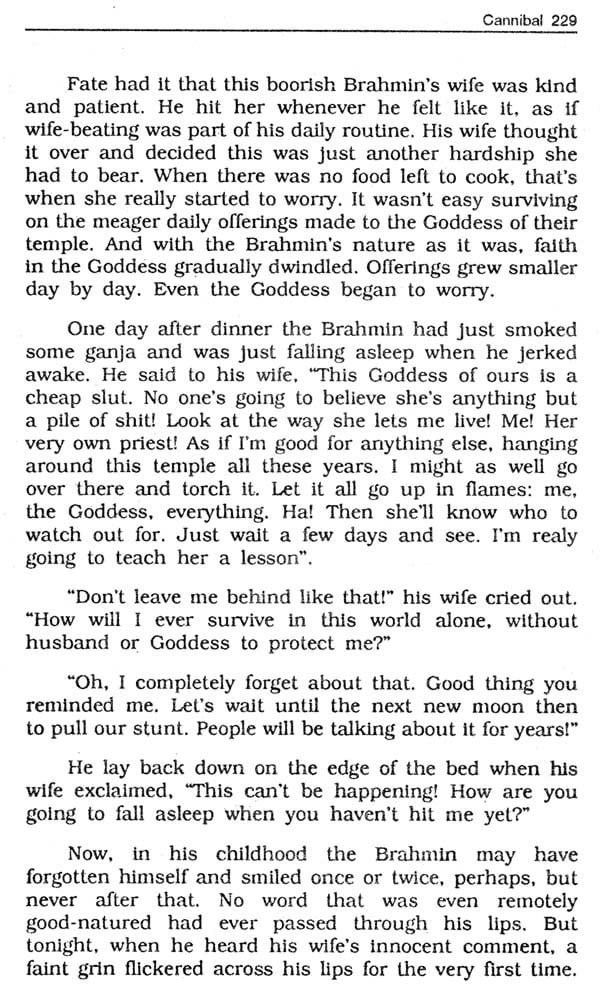
Contemporary Indian Shrot Stories (Series- IV)
Book Specification
| Item Code: | NBZ566 |
| Publisher: | SAHITYA AKADEMI, DELHI |
| Language: | English |
| Edition: | 2014 |
| ISBN: | 9798126018079 |
| Pages: | 338 |
| Cover: | PAPERBACK |
| Other Details | 8.50 X 5.50 inch |
| Weight | 430 gm |
Book Description
To write a preface for a collection of stories in twenty-two languages is, I think. a challenging task. In this pluralistic country like India, each literature has its own tradition and, therefore, one is not quite sure how far a particular story represents that tradition. But since they belong to a pan-Indian cultural ethos, it is possible to say that they, more or less, belong to a large joint family, in which many traditions coexist in an intimately interrelated pattern.
Although it is possible to pick out some 'artistic' triumphs like Nirmal Verma's "Birds' or M.T. Vasudevan Nair's 'Little Little Earthquakes' or Surendra Jha 'Suman's' 'The Heir' or `Gopinath Mohanty's 'The Bed of Roses', what I am interested in while reading such an anthology is the pattern of pan-Indian creativity ii. terms of recurrent themes, techniques and sensibilities. It is interesting to see, for instance, the theme of a woman's predicament in a changing society which is dealt with, say, in the Assamese story, 'Evening Walk', the Kannada story `Soliloquies of Saugandhf, the Hindi story 'Birds' and the Oriya story 'The Bed of Arrows'. These stories depict from the inside the various dimensions of the sociological tension that an Indian woman has to suffer from in a society which is fast gelling modernised. Although the subtlest expressions of a modern woman's consciousness are to be found in Nirmal Verma's and Gopinath Mohanty's stories, the other stories are no less significant if we look at them from a broad sociological point of view. The second important theme is that of corruption which is eating into the very fabric of society.
The Punjabi story, 'The Taxi Driver', the Nepali story 'Declaration of a Revolutionary', the Marathi story. 'A News Story' and the Urdu story (with its magic realism) touch upon the theme from various points of view. I have just mentioned only two recurrent themes, though it is possible to discover other themes like the tensions in rural life (e.g. the Bengali story) or the joint family system (e.g. the Sanskrit story). The search of recurrent themes is an attempt to seek unity, but actually speaking the variety of themes and concerns is so astounding that one feels like celebrating 'God's Plenty' in Indian literature written in many languages.
When we look at the techniques and styles, of the stories, we have to admit, to begin with, the coexistence of the traditional modes of narration with most modern avante-garde modes like magic realism (e.g. the Urdu story) surrealism (e.g. the Gujarati story) and the stream-of-consciousness (e.g. the Kannada story). But it appears that the point-of-view technique (of the Assamese, the Hindi, the Oriya, the Malayalam stories) has been handled most successfully by the Indian writers. On the whole, the volume presents a substantial view of what is happening in the area of short fiction in India. and what is happening is, I am sure, very exciting and worth talking about. One might say that at least half a dozen stories in the volume deserve to find a place in global anthologies of short fiction.
**Content and Sample Pages**
